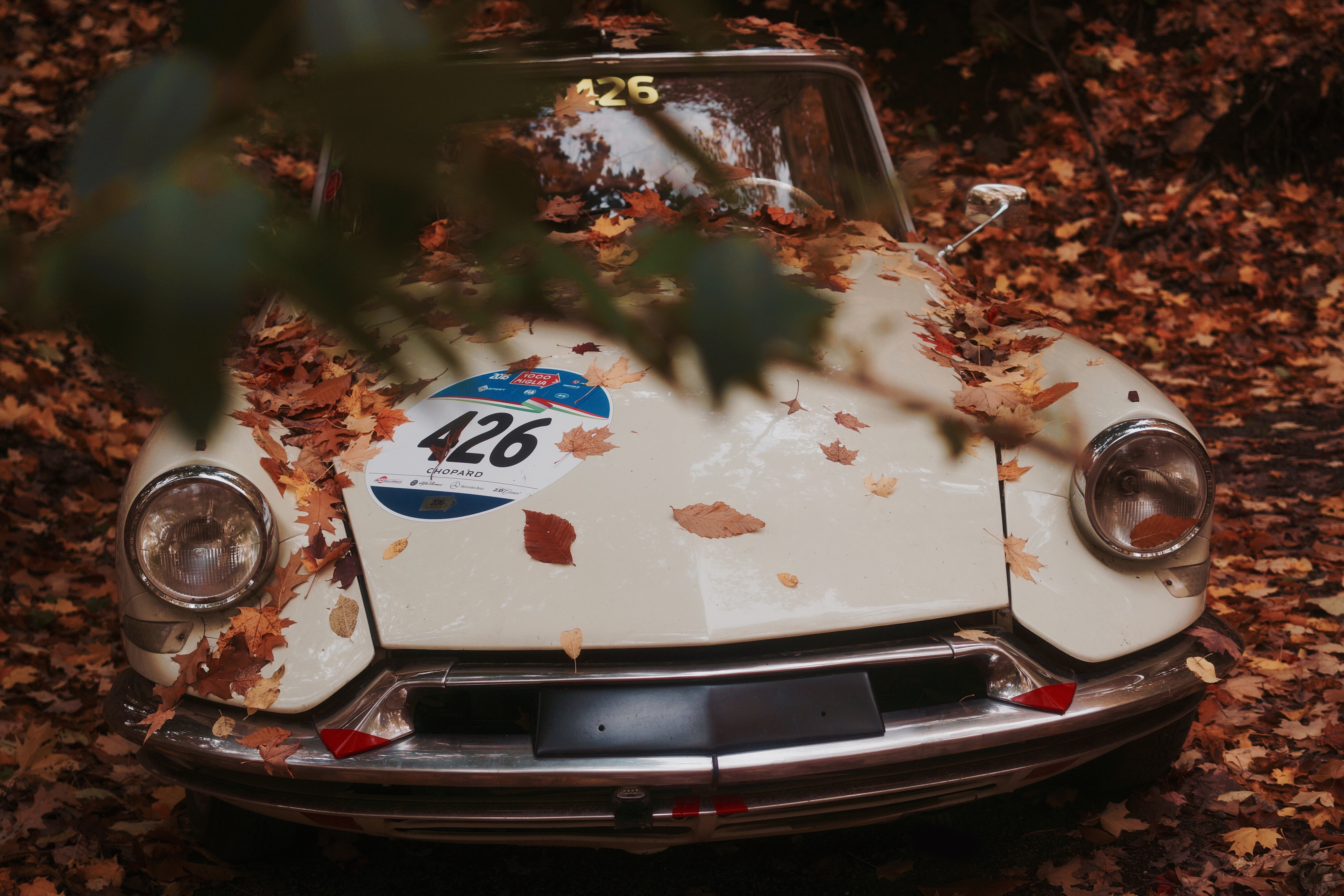
The rise in motor accidents during autumn is often blamed on a failure by drivers to adapt to the changing conditions following the warmer summer months. Autumn can see changeable weather with bright sunshine or high winds through to torrential rain or fog, often in just a matter of hours.
Having your motor trade insurance policy up-to-date and making sure you have carried out the necessary safety checks on your individual vehicles or fleet, can help to minimise some of the difficult conditions during these months.
For some help in getting your vehicles and drivers prepared for the autumnal months, here is some advice that can reduce the risk of breakdowns, delays and accidents during this season.
Leaves on the Road
Fallen leaves can cause hazardous conditions on the roads during heavy downpours. Combine this with darker evenings, and there is reason to modify driving styles as well as making sure bulbs, tyres and batteries are checked and working.
Slippery conditions can increase stopping distances considerably. Drivers need to pay close attention to checking that tyres have sufficient tread and are at the correct pressure. If your tyre pressure is incorrect, it can reduce the tyre’s contact with the road and reduce the ability to steer and brake suddenly on wet or slippery roads.
The legal limit for tyre tread is 1.6mm and 3mm is the minimum recommended for the colder months. Research has shown that tyres at the 1.6mm legal limit can take another 44 metres to stop at motorway speeds in rainy conditions compared with the tyres at 3mm.
Don’t be Dazzled
One of the greatest dangers during autumn is the low sun, which can cause considerable glare. According to the Automobile Association, windscreens should be cleaned inside and out to prevent glare from the sun shining through the marks. The same goes for sorting out glass scratches and chips that can intensify the sun’s glare.
Replace your wiper blades if they’re worn, damaged or more than a couple of years old and use screen wash. Sunglasses aren’t just for summer – keep a pair handy and use sun visors.
Remember, if the sun’s behind you, it’s in the eyes of those coming towards you. If the sun’s in your eyes, then it’s probably blinding those drivers behind you too.
Batteries and Bulbs
To avoid any delay in getting to clients or making deliveries, make sure that your battery isn’t near its end of life. Batteries generally last around five years and, if it’s struggling now, it’s more likely to fail during the colder weather when the electrical load on your vehicle is greater.
If you are concerned about your battery, get it checked or replaced now to avoid the hassle and expense of a breakdown later.
As we head into the darker months, check that your bulbs are all functioning properly, including brake lights and number plate lights. Whilst doing your checks, now is also a good time to top up your anti-freeze. Not just for snow and ice, antifreeze helps to prevent corrosion in the engine so should be used all year round. Refer to your handbook, as it is important you use the correct type – using the wrong anti-freeze or mixing two types can damage your engine.
Fog and Flooding
Fog is particularly risky, especially as it can appear out of nowhere. If the visibility falls below 50 metres, drivers should pull over until it clears. Other precautions include:
- Using fog lights or dipped lights rather than full beam to avoid a white wall effect.
- Avoiding tailgating. Allow plenty of room from the car in front, slow down by using your brake lights to warn other drivers
- Fog can distort the impression of speed, so keep checking.
October and November months see significant rainfall in the UK, and the resultant risk of flooding. Many of the precautions remain similar to fog regarding visibility and tailgating. Remember also that stopping distances will be significantly longer and, if possible, avoid driving through standing water to prevent internal damage to your vehicle. If you do have to drive through flood water, check your brakes are working afterwards.
Slow Down for Deer (and other animals)
Autumn is rutting season for deer, so many are on the move. If you hit a deer, it’s likely to cause serious damage to your vehicle, so slow down when you see warning signs. According to Highways England, around 74,000 deer are hit by cars every year, and this increases annually with a growing population.
If you catch one in your headlights, dim your lights and slow down as deer tend to freeze and then panic, running in unpredictable directions. If you see one deer, it’s also very likely more will follow. If you do injure a deer, call the police and report the incident.
Breakdown Cover
Autumn may be a colourful season, but it also means shorter days, colder weather, blustery wind and heavy rain, as well as a resultant sharp rise in breakdowns. Make sure you are fully covered with breakdown and recovery as part of your motor trade insurance policy.